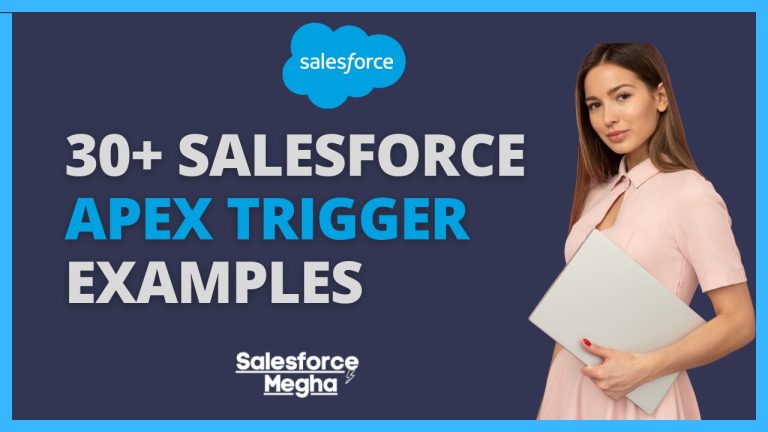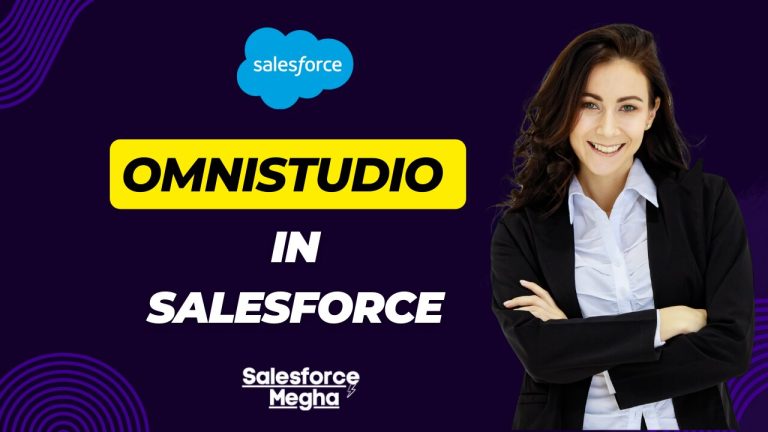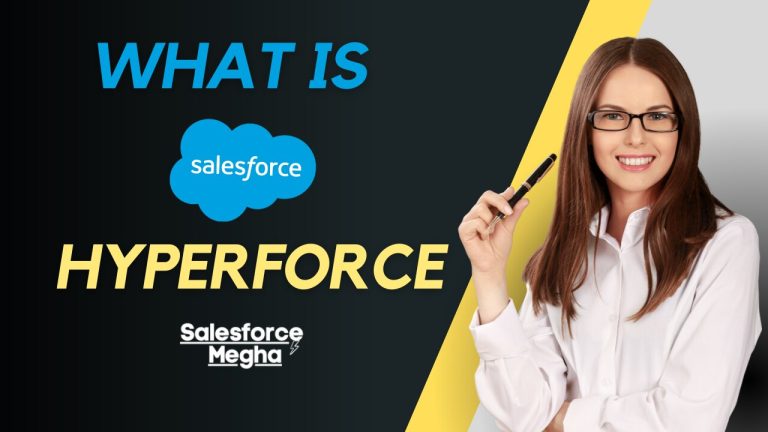As of 2024, the significance of LWC has only grown, becoming a key skill for any best Salesforce developer and a common focus in job interviews.
Landing your dream job as an LWC developer requires more than just technical skills. You need to showcase your knowledge in a clear, concise, and confident way during the interview. But don’t worry, this article is your ultimate weapon: a comprehensive guide to the most common LWC interview questions and answers.
Table of Contents
Salesforce LWC Developer: Imagine this
You walk into the interview room, feeling prepared and focused. Every question thrown your way is met with a calm, articulate response, demonstrating your expertise in LWC development. The interviewers are impressed, your confidence shines through, and you seal the deal with a handshake and a smile. In case you interested in Salesforce Apex Trigger Scenario Interview Questions (2024).
That’s the power of LWC Interview preparation
Throughout this guide, we’ll dive deep into the key LWC concepts you need to master. We’ll then tackle the most frequently asked interview questions, providing insightful answers and practical tips to help you stand out from the crowd.
Whether you’re a expert Salesforce LWC developer or just starting your LWC journey, this article is your roadmap to success.
So, grab your favorite coding buddy, a steaming cup of coffee, and get ready to unlock the door to your LWC dream career!
Let’s begin!
Introduction to LWC
Lightning Web Components (LWC) represent a modern framework pivotal in Salesforce’s ecosystem for creating cutting-edge user interfaces. Developed to harness the latest web standards, LWC empowers Salesforce developers with a toolset that elevates both web and mobile app experiences. This framework stands out for its compatibility with standard web technologies and for providing a lightweight solution that delivers exceptional performance.
Understanding the Basics of LWC
Lightning Web Components (LWC) form a crucial part of Salesforce’s modern UI framework. They are built using standard web technologies like HTML, JavaScript, and CSS, which allow developers to create efficient, reusable components. LWC leverages web standards to facilitate the creation of lightweight, fast-loading components. This makes it ideal for delivering high-performance applications within the Salesforce platform.
By using LWC, developers can enhance the user interface of Salesforce applications, making them more interactive and user-friendly. The framework’s alignment with standard web practices also makes it easier for new developers to adapt and start building robust applications in Salesforce.
For a more in-depth understanding of LWC, developers can refer to Salesforce’s official documentation.
difference between Salesforce Lightning and LWC?
| Feature | Salesforce Lightning | LWC (Lightning Web Components) |
|---|---|---|
| Purpose | A UI framework for Salesforce platform enhancement, facilitating application development. | A programming model for building custom, efficient web components. |
| Introduction Year | Launched in 2014 to modernize Salesforce’s UI/UX. | Introduced in 2019, emphasizing modern web development standards. |
| Technological Base | Based on the Aura Framework, with a variety of tools for UI customisation and interaction. | Utilizes modern web standards (HTML, CSS, JavaScript) for a lightweight approach. |
| Key Features | Offers customisable layouts, drag-and-drop components, improved navigation. | Features a modular design for efficient, reusable web components. |
| Target Audience | Aimed at Salesforce administrators and developers for in-platform development. | Geared towards web developers, both within and outside the Salesforce ecosystem. |
| Primary Use Cases | Enhances user experience and interface within the Salesforce platform. | Ideal for building standalone web components for diverse applications. |
| Integration | Integrates various Salesforce services and components for comprehensive development. | Can be integrated with Aura components, leveraging Salesforce’s capabilities. |
| Developer Experience | Offers a diverse range of tools and options for developers. | Streamlined, standards-based development approach for UI. |
Key LWC Concepts for Interviews
When preparing for LWC-related interviews, it’s crucial to understand several key concepts:
Component Structure
LWC consists of various files like HTML for structure, JavaScript for logic, CSS for styling, and metadata files for configuration. This modular approach enhances reusability and maintainability.
File Naming Conventions
Adherence to specific naming conventions is vital in LWC. File names should start with a lowercase letter and include only alphanumeric or underscore characters, without any whitespaces or special characters like hyphens.
Data Handling
Understanding the role of the @wire service in data provisioning and rendering is essential. Familiarity with event handling and the different phases of event propagation is also crucial for effectively managing component interactions.
Technical Deep Dive into LWC
This section delves into the more technical aspects of LWC:
Salesforce Lightning Design System (SLDS)
SLDS is a CSS framework integral to LWC, offering a set of design standards and visual elements. It simplifies the creation of visually appealing applications, aligning with Salesforce’s aesthetic guidelines without the need for extensive CSS coding.
Tools in Salesforce Lightning
LWC is supported by various Salesforce Lightning tools, enhancing its functionality. This includes the Lightning Component Framework, App Builder for drag-and-drop app construction, Schema Builder for database schema visualization, and Process Builder for automating complex business processes.
Interaction with Aura Components
Despite being a distinct framework, LWC can seamlessly integrate with Aura components using public APIs and events, allowing developers to leverage the best of both worlds in their Salesforce applications.
Common Interview Questions on LWC
In interviews, candidates can expect a range of questions on LWC that test their understanding and practical knowledge. Here are some common themes:
Fundamentals of LWC: Understand the basics, like what LWC is, its core modules, and the role of decorators like @api and @track. Questions may include explaining the advantages of LWC over Aura components and describing LWC’s component folder structure.
Component Communication: Explore how components interact, such as parent-child communication and event handling. Look into how to create and handle custom events, and the use of @api for component interaction.
Design and Styling: Deep dive into the Salesforce Lightning Design System (SLDS) and its role in LWC development. Questions might cover the use of SLDS and its importance in creating a unified user interface.
Advanced Features and Best Practices: Discuss topics like handling complex state management with libraries like Redux, using third-party JavaScript libraries, and best practices in LWC development.
Testing and Debugging: Understand the process of testing LWCs using frameworks like Jest and strategies for debugging components.
Error and Exception Handling: Cover the use of try-catch-finally blocks for robust error handling in LWC applications.
Data Management and Binding: Look into managing data sharing among components, handling data binding, and using Lightning Data Service in LWC.
Integrating with Other Technologies: Questions may include integrating LWC with Aura components, Visualforce pages, and handling interoperability between them.
Performance Considerations: Discuss aspects like how LWCs work faster than Aura components due to the absence of an abstraction layer and their lightweight nature.
Real-World Scenarios: Prepare for questions that simulate real-world scenarios, requiring a deep understanding of LWC’s practical applications and problem-solving skills.
70+ LWC Interview Questions and Answers
What is the main purpose of the Lightning Web Component (LWC) framework?
LWC is a programming model developed by Salesforce. Its main purpose is to help developers create reusable and efficient user interfaces that are compatible with the Lightning Experience and Salesforce mobile app.
How is LWC different from Aura?
LWC-based lightning components are built using web stack tools, whereas Aura-based lightning components are built using HTML5 and JavaScript tools.
Can you explain how third-party JavaScript libraries are used in Lightning Web Components?
To use third-party JavaScript libraries in LWC, you must upload the library as a static resource, then import it into your component using an ‘import’ statement with the resource URL. Load the script using the loadScript() function from the platformResourceLoader module within the renderedCallback() lifecycle hook.
What is the use of the @Wire decorator in LWC?
The @wire decorator in LWC is used to provision data, metadata, and other information from Salesforce to LWC components. It’s reactive, meaning it automatically re-renders components when input changes.
How do Lightning Web Components communicate with Aura components?
Aura components can communicate with Lightning Web Components using Public APIs and Events. LWC can be embedded within Aura Components, but the reverse is not possible.
What are some of the tools present in Salesforce Lightning?
Tools in Salesforce Lightning include Lightning Component Framework, Lightning Connect, Lightning App Builder, Lightning Schema Builder, and Lightning Process Builder.
How do you test Lightning Web Components?
Testing LWC involves using Jest, a JavaScript testing framework. Tests are written in .test.js files inside the __tests__ folder of your component directory. Each test file should import the component to be tested and use describe() function for grouping related tests, with it() function for individual tests and expect() function for assertions.
What is the role of the @Api decorator in LWC?
The @api decorator in LWC is used to make a property or method publicly accessible. This allows parent components to set or access the decorated properties and methods in a child component, enabling communication between components.
How do you handle exceptions and errors in Lightning Web Components?
n LWC, error handling is done using try-catch-finally blocks in JavaScript. The ‘try’ block contains the code that may potentially throw an exception, with the ‘catch’ block handling it and the ‘finally’ block executing regardless of the outcome. Additionally, LWC provides ‘@wire’ decorator for calling Apex methods, and any error during this operation is captured in the ‘error’ property of the wire service.
How do you handle dependent picklists in an LWC?
In LWC, dependent picklists can be handled by using the getPicklistValues wire adapter from the lightning/uiObjectInfoApi module. This wire adapter fetches the picklist values based on record type id and field API name, allowing developers to dynamically generate picklist options based on dependencies.
How do you use events in LWC?
In LWC, events are used for communication between components. Custom events are created and dispatched from a component, and other components can listen and respond to these events. Standard DOM events can also be used for user interactions like clicks and input changes.
Can you explain the difference between @Track and @Api decorators?
The @api decorator marks a field as public, allowing it to be set by a parent component. The @track decorator, used for reactivity in LWC, is no longer required for primitive data types as changes are tracked automatically, but is still needed for objects and arrays.
What is the shadow DOM and how does it relate to LWC?
The shadow DOM provides encapsulation for LWC components. It isolates the component’s markup and style, preventing styles from leaking in or out and markup from being accidentally manipulated by other components. This encapsulation is automatic in LWC.
What is a decorator in LWC and how is it used?
A decorator in LWC is a special syntax used to modify class properties and methods. Common decorators include @api, @track, and @wire. They are used to define public properties, reactive properties, and to wire data to a component, respectively.
What are the benefits of using LWC?
LWC offers modern web standards compatibility, better performance, Aura components interoperability, support for modern JavaScript features, and enhanced testing and debugging capabilities.
Can LWC components be used in Aura Components and vice versa?
LWC components can be nested inside Aura components, but Aura components cannot be used within LWC. This allows for gradual migration from Aura to LWC.
How do you use events in LWC?
Events in LWC are used for inter-component communication. Custom events are created and dispatched by a component for other components to listen and respond to. Standard DOM events are also used for user interaction.
What are the core modules in LWC?
Core modules in LWC are JavaScript modules that provide basic functionalities and are imported from the ‘lwc’ namespace. Key modules include LightningElement, @api, @track, and @wire. These modules help in defining the component’s behavior, exposing public properties and methods, tracking changes, and wiring data.
How can you communicate between parent and child components in LWC?
Communication between parent and child components in LWC can be achieved using the @api decorator to expose properties and methods, allowing the parent component to set or access them. Additionally, the child component can emit custom events, which the parent component listens for and handles.
How is data sharing managed among Lightning Web Components?
Data sharing in LWC is managed through a reactive wire service and properties. The wire service provisions data from Salesforce, automatically re-rendering components when inputs change. Properties are used for parent-to-child communication, updating the child’s property when the parent’s property value changes.
Describe how to handle errors and exceptions in LWC.
Errors and exceptions in LWC are typically handled using try-catch-finally blocks. The try block contains code that might throw an exception, the catch block handles the error, and the finally block executes code regardless of whether an exception occurred. Additionally, errors in wire services are captured in the error property.
What are the best practices for using LWC?
Best practices in LWC include using dispatcher components to listen and relay events, segregating business-level events from low-level events, clearing cache data when possible, and utilizing helper methods for repeated logic.
Explain the difference between Aura and LWC.
The key difference between Aura and LWC is that LWC-based lightning components are built using web stack tools and follow modern web standards, while Aura-based lightning components are built using HTML5 and JavaScript tools. LWC generally offers better performance and more modern features.
How many components are there in LWC?
The LWC architecture mainly consists of three components: the LWC Framework, Base Lightning Components, and Salesforce Bindings. These components work together to provide a comprehensive development environment for building Salesforce apps.
What is the purpose of LWC?
The purpose of LWC is to provide a modern framework for building efficient and reusable user interfaces on the Salesforce platform. It leverages standard web technologies to deliver high-performance UI components that are compatible with the Salesforce ecosystem.
How do you implement CSS in a Lightning Web Component?
CSS in LWC is scoped to the component and is defined in a separate .css file within the component bundle. The styles declared in this file apply only to the component’s template and don’t leak to other components.
Can LWC work with external APIs? If yes, how?
Yes, LWC can work with external APIs. You can call external APIs from Apex methods and expose these methods to LWC using @AuraEnabled annotation. Then, use the @wire or imperative approach to call these Apex methods from your LWC.
What are the different lifecycle hooks available in LWC?
LWC provides several lifecycle hooks, such as constructor(), connectedCallback(), renderedCallback(), disconnectedCallback(), and errorCallback(). Each of these hooks is called at different stages in the lifecycle of the component.
How does the event propagation model work in LWC?
In LWC, events follow the standard DOM event propagation model, which includes three phases: capturing, target, and bubbling. By default, events bubble up from the child to the parent, but this behavior can be modified.
Explain the use of slots in LWC.
Slots in LWC are a way to create a placeholder inside a component that can be filled with custom content. They are used for content projection, allowing child components to be placed within the layout of a parent component.
How can you call an Apex method from a Lightning Web Component?
An Apex method can be called from an LWC either using the @wire decorator for a reactive approach or using an imperative call. Apex methods should be exposed to LWC using the @AuraEnabled annotation.
What is the importance of the track property in LWC?
The track property in LWC was initially used to monitor changes in objects and arrays for reactivity. However, since the Spring ’20 release, LWC automatically tracks changes in fields, so the use of @track is reduced.
How do you ensure data security in LWC?
Data security in LWC is ensured by adhering to Salesforce’s security best practices, such as enforcing CRUD and FLS (Field Level Security), using secure Apex methods, and avoiding the exposure of sensitive data in JavaScript.
Can LWC be used in Salesforce Mobile?
Yes, LWC components are fully supported in the Salesforce Mobile App. They are designed to be mobile-responsive, making them suitable for use in both desktop and mobile interfaces.
What is Locker Service in LWC and why is it important?
Locker Service in LWC is a security architecture that isolates components in their namespace, preventing them from accessing each other’s state. It enhances security by enforcing best practices in JavaScript and DOM manipulation.
What are the different ways to deploy LWC in Salesforce?
LWC can be deployed using Salesforce CLI, Change Sets, Unmanaged Packages, or Metadata API. Each method serves different deployment needs, from individual component deployment to full-scale application releases.
How can you enhance the performance of LWC?
Enhancing LWC performance involves optimizing component code, minimizing the use of JavaScript for DOM manipulation, using lazy loading for components, optimizing Apex calls, and leveraging browser caching.
What is the significance of the LightningElement base class in LWC
The LightningElement base class is the core of LWC. It provides the basic functionalities needed for creating custom elements and includes lifecycle hooks, reactive properties, and rendering capabilities.
How do you implement internationalization in LWC?
Internationalization in LWC can be implemented using custom labels, lightning-formatted-text, and lightning-formatted-number components, which automatically handle locale-specific formats.
Explain the concept of reactive properties in LWC.
Reactive properties in LWC are properties that trigger the component to re-render when their values change. This reactivity is automatically handled by LWC for primitive data types and can be enforced for objects and arrays using @track.
Can LWC interact with Salesforce data without Apex?
Yes, LWC can interact with Salesforce data without Apex using wire adapters like getRecord, getListUi, and getObjectInfo from the lightning/uiRecordApi module, which allow read access to Salesforce data.
How do you handle navigation in LWC?
Navigation in LWC is handled using the lightning/navigation service. This service provides methods for navigating to Salesforce pages, records, and objects within the Lightning Experience and Salesforce mobile app.
What are the key differences between component markup in Aura and LWC?
Component markup in LWC is more aligned with modern web standards, using standard HTML and JavaScript, whereas Aura has its custom syntax and framework-specific tags.
How do you manage state in LWC?
State management in LWC can be done through reactive properties, JavaScript variables, and shared services. Complex state management might involve using patterns like Redux.
What are the guidelines for testing LWC?
Testing LWC involves writing unit tests using Jest. Best practices include testing both positive and negative scenarios, mocking wire service calls and Apex methods, and ensuring code coverage.
How do you use the @wire decorator in LWC?
The @wire decorator is used to read data from Salesforce, often from an Apex method or a standard Salesforce API. When the data changes, the wire service provisions the new data, and the component re-renders automatically.
What are some common tools in Salesforce Lightning?
Common tools in Salesforce Lightning include the Lightning Component Framework, Lightning Connect, Lightning App Builder, Lightning Schema Builder, and Lightning Process Builder. These tools collectively support the development and integration of custom functionalities in Salesforce.
Can you explain what Salesforce Developer Experience (SFDX) is?
Salesforce Developer Experience (SFDX) refers to a set of tools and features provided by Salesforce to enhance the development experience on its platform. SFDX includes functionalities like source-driven development, scratch orgs, and continuous integration/continuous delivery.
What triggers the @wire method in LWC?
The @wire method is automatically invoked in a Lightning Web Component when the component is connected to the DOM or when any reactive property that the method depends on changes. You may like Salesforce Apex Trigger Examples (Advanced).
Discuss the immutability of data returned by imperative Apex methods in LWC.
Contrary to common belief, the data returned by imperative Apex methods in LWC is mutable. Developers have the ability to change the data once it’s received in the component.
Why do LWC components generally perform faster than Aura components?
LWC components are faster than Aura components primarily because they are built using modern web standards and a lightweight framework. The absence of an abstraction layer in LWC leads to better performance.
Describe the communication process between Lightning Web Components and Aura components.
Lightning Web Components can communicate with Aura components using public APIs and events. This interoperability allows for a combination of both LWC and Aura components in a Salesforce application.
What are some disadvantages of using LWC?
Although LWC is powerful, it has some limitations like lack of support for the Lightning Experience Console, absence of two-way binding, and restrictions in using Email templates.
Explain the concept of slots in LWC.
Slots in LWC allow for the creation of reusable components by enabling component composition. A slot acts as a placeholder within a component where other components can be inserted, facilitating the creation of complex and nested structures.
How do you test LWC components?
Testing LWC components typically involves using Jest, a JavaScript testing framework. Developers write unit tests in .test.js files, utilizing functions like describe() for grouping tests and it() for individual test cases
How does LWC handle data security, particularly in regard to CRUD and FLS?
LWC adheres to Salesforce’s security model, ensuring compliance with CRUD and FLS (Field Level Security). This involves respecting user permissions an
Describe the use of Lightning Message Service (LMS) in LWC.
Lightning Message Service (LMS) facilitates communication across the Salesforce UI, including LWC, Aura components, and Visualforce pages. It is useful for passing messages between components that are not in a direct hierarchy.
Can you explain the concept and usage of decorators in LWC?
Decorators like @api, @track, and @wire in LWC are special JavaScript annotations that add metadata and functionality to class properties and methods. They are used to define public properties, track property changes, and connect components to Salesforce data.
How do you optimize a large list of records in LWC to improve performance?
To optimize performance with large lists, use techniques like pagination, lazy loading, and virtual scrolling. These approaches help in rendering only a subset of items at a time, reducing the load on the browser.
What role does the render() method play in LWC?
The render() method in LWC is a lifecycle hook used to override the default rendering process. It can be used to conditionally render different templates based on component state.
Discuss the concept of reactive wire adapters in LWC.
Reactive wire adapters in LWC are used to automatically provision data from Salesforce when input parameters change, triggering a re-render of the component.
How do you implement dynamic styling in LWC?
Dynamic styling in LWC can be achieved using JavaScript to manipulate CSS classes and styles. The classList API is commonly used for adding or removing CSS classes dynamically.
Explain how to use Salesforce schema references in LWC.
Salesforce schema references in LWC, like field and object names, can be imported from the @salesforce/schema module. This approach ensures referential integrity and avoids hard-coding API names.
How can LWC components be debugged in the Salesforce Developer Console?
LWC components can be debugged using browser developer tools. Console logs, breakpoints, and the Performance tab are typical tools used. Salesforce-specific debugging can be done using the Salesforce Developer Console’s debug logs.
What are the differences in event handling between LWC and Aura components?
Event handling in LWC follows standard web component models, primarily using CustomEvent for component communication. In contrast, Aura uses its event system, which is more framework-specific.
How do you implement inheritance in LWC?
Inheritance in LWC can be achieved by extending classes. A common pattern is to have a base LWC component class that defines shared behavior, and then other components extend this class to inherit its properties and methods.
Can LWC components be used outside of the Salesforce platform?
LWC components, while primarily designed for the Salesforce platform, can be used outside Salesforce in standalone web applications. This is possible because LWC is based on standard web technologies.
What is the purpose of the slot tag in LWC?
The slot tag in LWC is used for content projection, allowing child components to be placed within the layout of a parent component. It provides a way to create flexible and reusable component templates.
How do you handle mobile responsiveness in LWC?
Mobile responsiveness in LWC can be handled using CSS media queries and the Salesforce Lightning Design System (SLDS), which provides a responsive grid system and utility classes to build responsive layouts.
Explain the role of the renderedCallback() method in LWC
The renderedCallback() method in LWC is a lifecycle hook used to perform logic after a component has completed its rendering phase. It’s an ideal place for manipulating the DOM or for loading scripts using loadScript() from platformResourceLoader.
import { LightningElement } from 'lwc';
import { loadScript } from 'lightning/platformResourceLoader';
import LIBRARY from '@salesforce/resourceUrl/library';
export default class ExampleComponent extends LightningElement {
renderedCallback() {
loadScript(this, LIBRARY)
.then(() => {
// Script loaded and available for use
})
.catch(error => {
// Handle script load error
});
}
}Do You Know? Salesforce’s Future With AI And Data Integration
Can you explain the difference between imperative and declarative methods in LWC?
Imperative methods in LWC are direct function calls to perform actions like fetching data. Declarative methods involve using @wire for automatic data retrieval and component re-rendering based on data changes. For example, using @wire to call an Apex method:
import { LightningElement, wire } from 'lwc';
import getContacts from '@salesforce/apex/ContactController.getContacts';
export default class ContactList extends LightningElement {
@wire(getContacts) contacts;
}How Do You Handle Dependent Picklists In An LWC?
Dependent picklists in LWC can be managed using the getPicklistValues wire adapter from the lightning/uiObjectInfoApi module. This wire adapter fetches the picklist values based on record type id and field API name. Here’s a snippet to illustrate:
import { LightningElement, wire, api } from 'lwc';
import { getPicklistValues } from 'lightning/uiObjectInfoApi';
import STATE_FIELD from '@salesforce/schema/Account.BillingState';
import COUNTRY_FIELD from '@salesforce/schema/Account.BillingCountry';
export default class AccountPicker extends LightningElement {
@api recordTypeId;
@wire(getPicklistValues, { recordTypeId: '$recordTypeId', fieldApiName: STATE_FIELD })
statePicklistValues;
}How do you communicate between LWC components?
Communication between LWC components is achieved through public properties (@api), custom events, and the reactive wire service. Child-to-parent communication typically uses custom events. For example, a child component might dispatch an event like this:
import { LightningElement } from 'lwc';
export default class ChildComponent extends LightningElement {
handleChange(event) {
const customEvent = new CustomEvent('myevent', { detail: event.target.value });
this.dispatchEvent(customEvent);
}
}How do you use Lightning Data Service (LDS) in your LWC development?
Lightning Data Service (LDS) in LWC is used for CRUD operations on records without needing Apex. It provides record data to components and handles field-level security and sharing rules. You use LDS by importing functions from lightning/uiRecordApi. For example, to read a record, you would use getRecord.
import { LightningElement, wire, api } from 'lwc';
import { getRecord } from 'lightning/uiRecordApi';
export default class ExampleComponent extends LightningElement {
@api recordId;
@wire(getRecord, { recordId: '$recordId', fields: ['Account.Name', 'Account.Industry'] })
account;
}Conclusion
In conclusion, this comprehensive collection of Lightning Web Component (LWC) interview questions and answers serves as an essential resource for both aspiring and experienced Salesforce developers. From the basics of LWC, its functionalities, and differences from Aura components, to advanced topics like data security, event handling, and performance optimization, these questions cover a broad spectrum of critical concepts.
They not only prepare candidates for technical interviews but also enhance their understanding of LWC in real-world Salesforce development. This knowledge is crucial in navigating the dynamic landscape of Salesforce development, ensuring developers are well-equipped to build efficient, scalable, and secure Salesforce applications. Whether you’re prepping for an interview or looking to deepen your Salesforce expertise, this collection is a valuable asset in your professional journey.








Way cool! Some very valid points! I appreciate you penning this post plus the rest of the website is also very good.
Thanks Elizabeth Jones! Best of luck for your LWC Interview